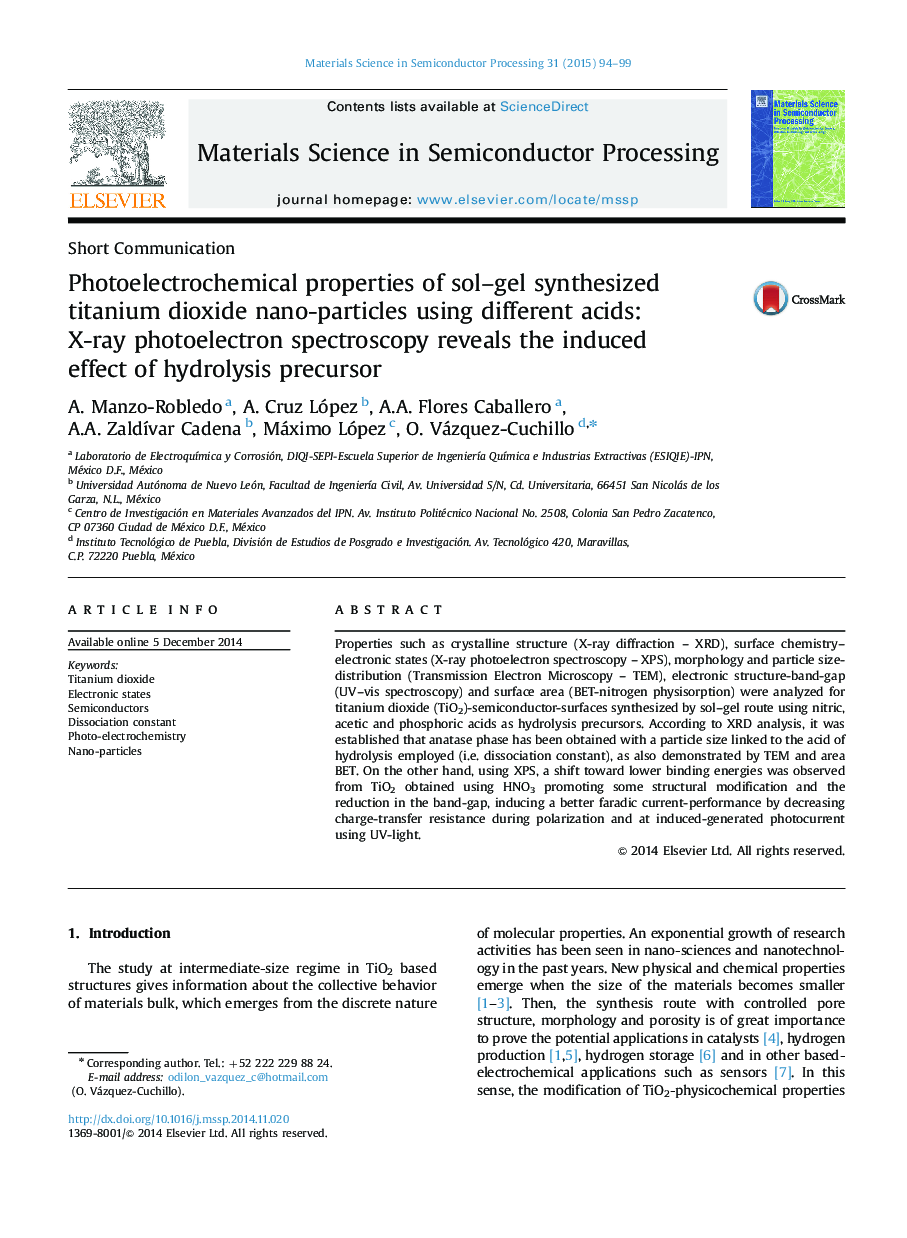| Article ID | Journal | Published Year | Pages | File Type |
|---|---|---|---|---|
| 728123 | Materials Science in Semiconductor Processing | 2015 | 6 Pages |
Properties such as crystalline structure (X-ray diffraction – XRD), surface chemistry–electronic states (X-ray photoelectron spectroscopy – XPS), morphology and particle size-distribution (Transmission Electron Microscopy – TEM), electronic structure-band-gap (UV–vis spectroscopy) and surface area (BET-nitrogen physisorption) were analyzed for titanium dioxide (TiO2)-semiconductor-surfaces synthesized by sol–gel route using nitric, acetic and phosphoric acids as hydrolysis precursors. According to XRD analysis, it was established that anatase phase has been obtained with a particle size linked to the acid of hydrolysis employed (i.e. dissociation constant), as also demonstrated by TEM and area BET. On the other hand, using XPS, a shift toward lower binding energies was observed from TiO2 obtained using HNO3 promoting some structural modification and the reduction in the band-gap, inducing a better faradic current-performance by decreasing charge-transfer resistance during polarization and at induced-generated photocurrent using UV-light.
